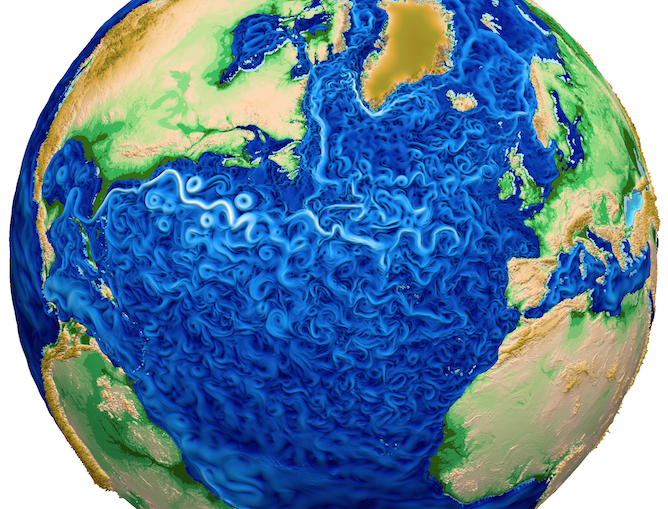Mathematical modeling of the ocean with Oceananigans
Undergraduate Project 2024-25 (4H)
Our global ocean (and climate) models are essentially numerical approximations of a set of fluid equations that describe the ocean dynamics across the entire planet. However, these numerical approximations fall short in capturing very fast phenomena such as waves or very small-scale ones like microphysics. We need good mathematical models to incorporate the effects of these unresolved phenomena into the ocean and climate models.

In this project, we study some mathematical models of oceanic phenomena that are not fully resolved in the global climate models and try to use numerical simulations to verify these models or understand them better. Depending on students' interests and skills, the project may focus more on programming or mathematical analysis. Perturbation methods serve as our primary mathematical tool for modeling these phenomena. For numerical simulations, we utilize Oceananigans [1, 2], a recently developed ocean model known for its user-friendly interface and comprehensive documentation. Alongside gaining proficiency in Oceananigans, students also explore fundamental aspects of ocean physics such as wave-vortex interactions, adding depth to their understanding of ocean dynamics. To get a better idea about ocean physics and the models we study you can take a look at [3].

In this project, we study some mathematical models of oceanic phenomena that are not fully resolved in the global climate models and try to use numerical simulations to verify these models or understand them better. Depending on students' interests and skills, the project may focus more on programming or mathematical analysis. Perturbation methods serve as our primary mathematical tool for modeling these phenomena. For numerical simulations, we utilize Oceananigans [1, 2], a recently developed ocean model known for its user-friendly interface and comprehensive documentation. Alongside gaining proficiency in Oceananigans, students also explore fundamental aspects of ocean physics such as wave-vortex interactions, adding depth to their understanding of ocean dynamics. To get a better idea about ocean physics and the models we study you can take a look at [3].
This project is well suited for students with programming skills and a passion for climate and geophysical fluids. Some knowledge of fluid mechanics is necessary for this project (it is ideal if you have taken Fluid Mechanics III). It is also very useful if Geophysical and Astrophysical Fluids IV is taken alongside this project.
[1] YouTube video about Oceananigans.jl